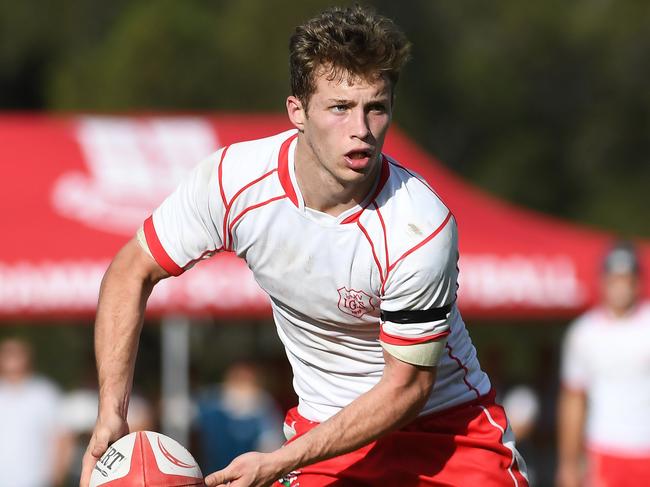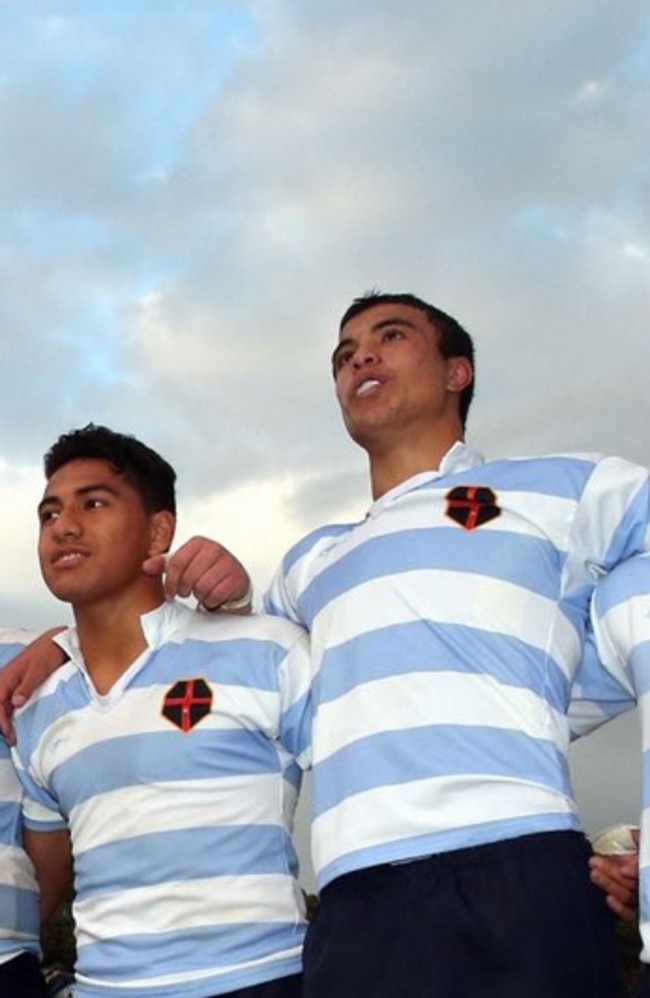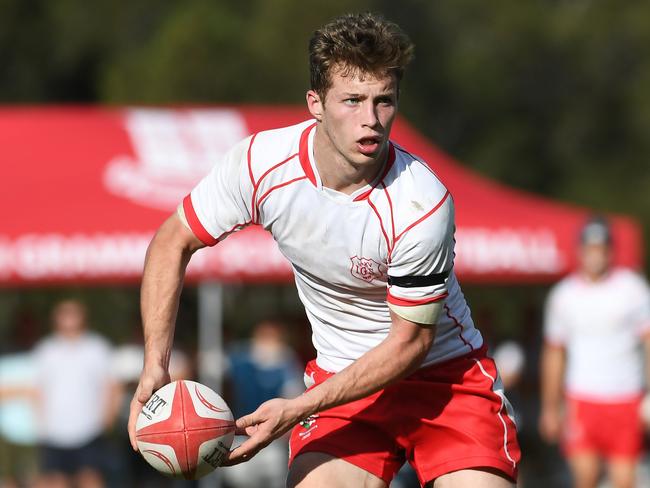Inside the GPS and CAS rugby union school competitions nurturing the next generation of NRL talent
Sydney and Brisbane’s private schools were once the exclusive home of future Wallabies and rugby union players, now they are a breeding ground for future NRL stars - we reveal how union lost this battle.

NRL
Don't miss out on the headlines from NRL. Followed categories will be added to My News.
It was once the exclusive home of future Wallabies and rugby union players, now elite rugby schools form a crucial part of the NRL’s pathways system.
The GPS and CAS rugby union school competitions of Sydney and Brisbane go from strength to strength as a breeding ground for future NRL stars as the battle for junior talent reaches unprecedented levels.
While rugby union is sometimes able to retain some of the junior talent, it cannot financially compete with the NRL, which is fuelled by a multibillion-dollar broadcast rights deal that leaves the 15-man code in the dust.
NRL development contracts, which are available for up to six players on a club’s supplementary roster, are now worth $80,000, plus $3000 match payments if they play first grade.
If a young talent secures a top-30 spot, their minimum salary starts at $130,000, and that will increase by $5000 until the end of 2027.
Rugby union doesn’t have that financial clout.

Although rugby struck a blow in enticing former Kings School star Joseph-Aukuso Suaalii back from the NRL and Sydney Roosters — on a three-year, $4.8 million deal — it’s an isolated success story.
State of Origin I featured six players who came through GPS systems – Suaalii (Kings) and Angus Crichton (Scots) for NSW, and Hamiso Tabuai-Fidow (Brisbane Grammar), Jaydn Su’A (Anglican Church Grammar), Pat Carrigan (Gregory Terrace) and Lindsay Collins (Padua) for Queensland.
Rugby’s inability to retain the talent being produced by elite rugby schools has significantly contributed to why Australia hasn’t not won a World Cup since 1999 or a Bledisloe Cup since 2002.

The code at the senior level is struggling, but its school system is as competitive as ever, and the NRL’s invasion has done anything but derail the century-old structure.
It’s actually a mutually beneficial partnership with elite rugby schools, whose priority isn’t the holistic health of rugby union in Australia, rather it is winning their First XV premiership. Who their players are contracted to, or where they go to play after they graduate, isn’t a concern for rugby schools.

The schools invest significant money and resources into driving the success of their rugby systems, where players benefit not only from top-tier education, but also world-class facilities, full-time coaching and a range of sporting programs that help with their physical development.
As a result, NRL clubs benefit from sending their players to the schools and playing rugby, where the skills are easily transferred back to rugby league.
And it comes at a cut-price for rugby league, who often have already identified these players and already have them coming through their own junior systems.
Either the elite schools recruit the players on scholarships, or their tuition is often being paid for by NRL clubs, which is legal under the salary cap as part of an education allowance.
Some of the NRL’s best talent has come through rugby schools. South Sydney’s Cameron Murray, Melbourne’s Ryan Papenhuyzen, Parramatta’s Will Penisini and Manly’s Tolutau Koula all have elite rugby pedigree.
In Queensland, the likes of Kalyn Ponga, Ezra Mam and Sam Walker all benefited from the GPS system.
The latest talents to roll off the rugby schools/NRL pathways production line will be on show next week at Leichhardt Oval when NSW and Queensland do battle in the under-19s State of Origin clash.
The match will feature a host of talented up and comers including two youngsters from elite rugby schools who have already made their NRL debuts in the Sydney Roosters’ Blake Steep, who attended The Scots College, and Penrith’s Jesse McLean, who went to Newington College.




